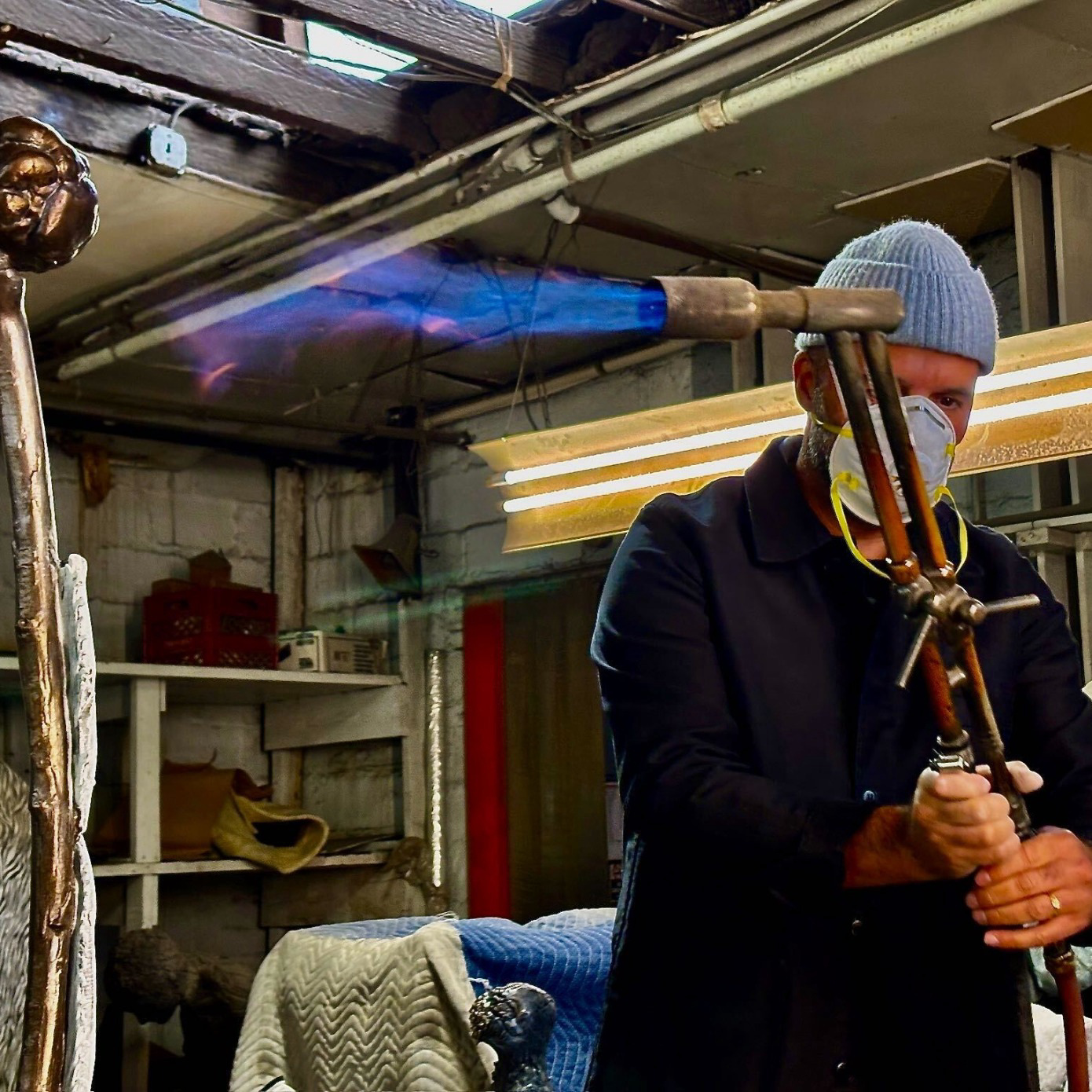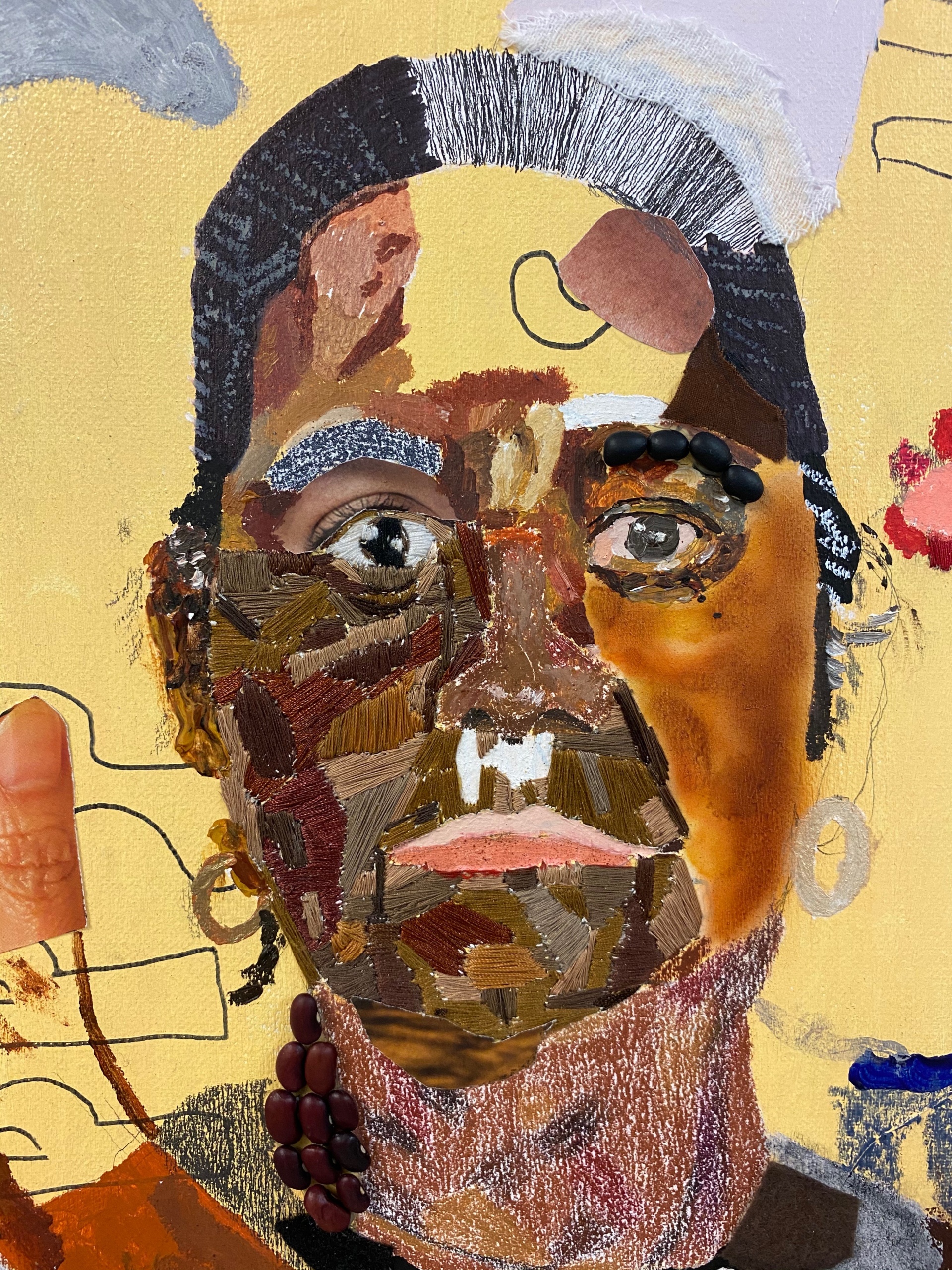
As artists, we often feel art market pressure to continue making work that sells. For an ongoing series of portraits, painter John Rivas has instead evolved his practice, exploring a new medium influenced by his familial traditions. Inspired by his late grandmother and also incorporating dried corn and beans, the artist takes a needle and thread to his paintings. He sews his Salvadorean roots into intricate portraits of family members whose photographs he sources from his mother’s albums. Recently moved into the MFA Studios at Columbia University in New York, Rivas gives a glimpse into the new series, whose canvases range in size from towering to intimate and will debut at several gallery shows over the next two years.

John Rivas: Welcome to my little home here at Columbia. I moved in about a month ago.
Storm Ascher: Wow, you’ve really made yourself at home here already!
JR: Yeah, I brought some stuff over from my other studio in New Jersey. Every single day I have a different energy so it's nice to go between both studios to be in a different environment. The New Jersey studio is more suburban; it’s very quiet and peaceful so there I’m working tranquilly. Once I come here it’s the city. I’m way more active and vibrant, and this is where I’m focusing on the stitching work that is part of my new series. Quarantine really had me meditating on how I evolve my art.
SA: How did you come to deciding that stitching was the way to go?
JR: Last year I lost my last grandmother—my mom’s mom—and she was very into stitching. I was going through her pictures and there was a great one of her working with the sewing machine, and I thought ‘I should try this; I should do something with it.’ So I started experimenting stitching with a needle and thread and I was like, ‘Yo. this is my next level.’ And yes, it can elevate the work in a different way, but I’m also going back to my family traditions. It’s something my mom’s mother did, my dad’s mother did… When my girlfriend's grandmother came to visit to meet me the first time, she was threading together a sofa. I feel it’s really what older women back in El Salvador do a lot, so I really wanted to bring it into my practice.
SA: How has it been actually learning to sew?
JR: No lie, it’s been difficult. It would be cool if I had my grandmother around to teach me and explain how to do it, but it was more of a ‘I’m just gonna pick up a needle and thread and start doing it myself’ feeling for me. There's a lot of trial and error, a lot of poking myself with the needle—that shit hurts! But I start to get into a rhythm where it’s almost like the paint brushstrokes that I’m used to. I’ve gotten really comfortable with it.
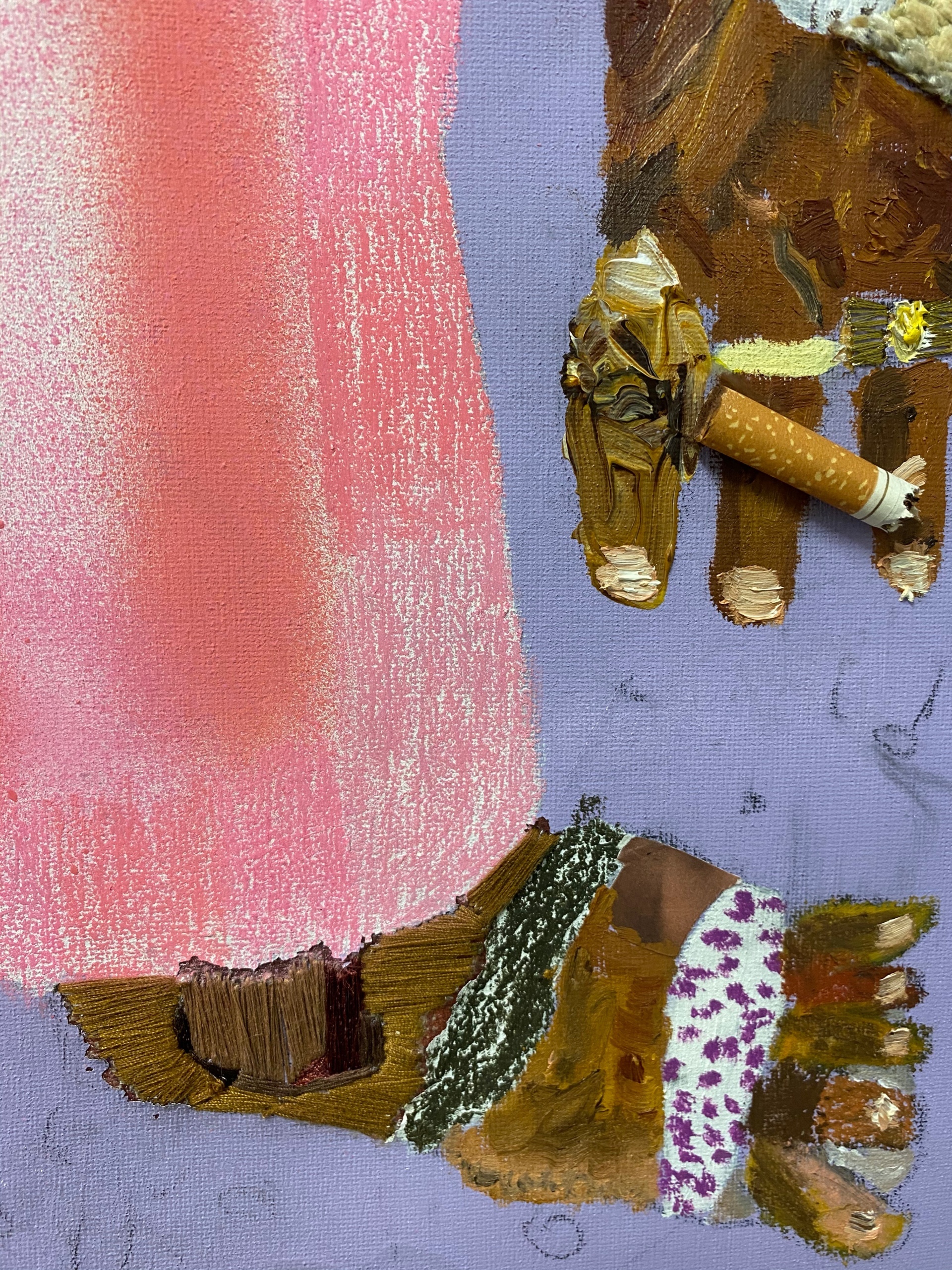
SA: So are you churning these out now? You’ve always been very prolific.
JR: I mean, it’s still very time consuming. It’s my time to be patient and take time with my work. When I was doing just painting, I would knock out at least three or four paintings a month. Now it's one per month and a half. It’s helped me be calm—if things aren’t working one day I can take a step back and come back to it the next day, and keep going.
SA: I love how you’ve chosen the colors of the thread; I can see it’s so intentional to switch between fluorescent and muted tones, even getting those accents of the subject’s cheekbones. Have you slated out sketches so you know what you’re going to sew into where? What is the plan or process or are they random decisions?
JR: Well, some are random but also really based off the images from my mom’s photo albums. I’ll choose one section of the face and then approach it based on the colors of the skin. I dissect the section by threads of the lightest, midtone and darkest parts.
SA: That little piece of yellow and red in the subjects’ eyes! What is that about?
JR: Yeah. The old cameras use flash.
SA: You get a glare.
JR: Exactly. Stitching has taught me to really train my eye to actually look. My work prior to this was a lot more rushed but now I’m just really taking my time, looking at every single detail and making sure everything is perfect, in a way. Even though it takes a lot more time I feel it’s a lot more worth it.
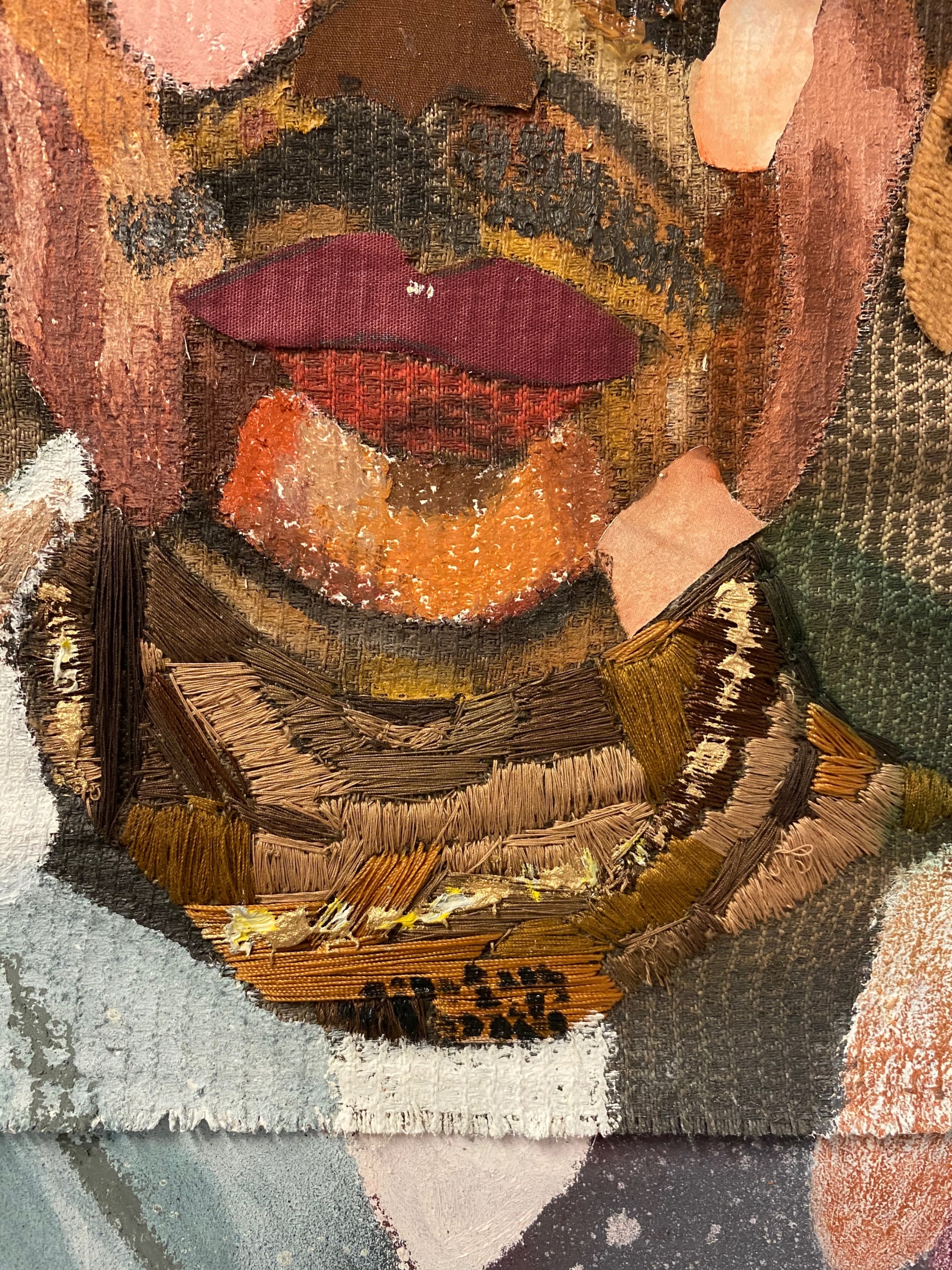
SA: Many of these are scenes of your family, right?
JR: Yes, I’ve always worked on family portraits but recently I’m doing a lot more images of moments from family tradition. The writing on this piece says “LA SOPA ES PARA LA GOMA”. Goma means hangover. There’s this tradition or myth that after a night of drinking and waking up with a hangover, soup cures you. It’s an elixir for the day after and you’ll be all good. In my family, if we drink on Saturdays, on Sundays we make soup, and that’s the way of recovery. If someone sees this painting and understands they know this tradition, too.
SA: I’ve always appreciated that you use text that signals just to the people that would think, ‘If you know, you know.’
JR: That’s what the next series is all about. If you know you know you know. At the end of the day, people come from different customs, but I’m really focusing on my specific family traditions. My family doesn’t really understand art as much, but by seeing the words, they can feel that sense of ‘Ah, I get it.’
SA: It was so great for the show we had in Los Angeles when your family came. It was just the sweetest thing. They were like, ‘We don’t know if we’re actually supposed to come in… can we stand here? I said, “You can do anything you want; this is your family up on the wall!’
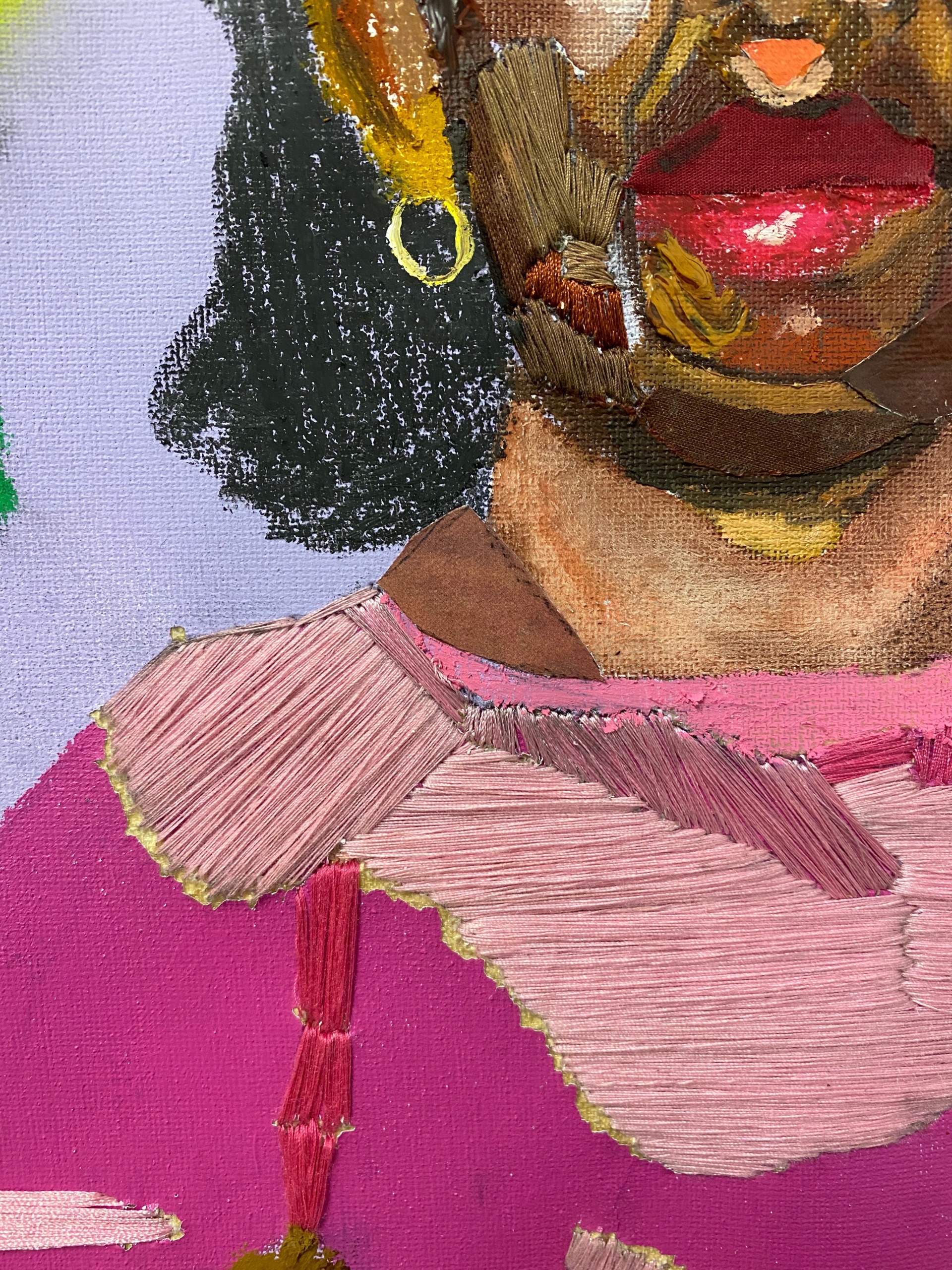
JR: That’s the thing: Art has made me a lot closer to family I’ve never spoken to much before. When I was little, we had a few interactions but then I heard that they’re showing love to me at shows out in LA. I never asked them to pull up; they did that on their own. I was really touched by that. It’s definitely opened a lot more doors to different family members.
SA: Are these family members being featured in your work now?
JR: Before I was just working on more of my immediate family, but now I can break those boundaries and expand the family history. So I want to wait until all this [COVID-19] is over so I can see them in person and talk to them and get that feel face-to-face. It’s crazy thinking back to before our time at the School of Visual Arts I didn’t know anything about art history. I just did what they told me when I got there. I realized the art history for my work is my own family history, the oral history and finding these photo albums book by book—each book becomes a new series.

